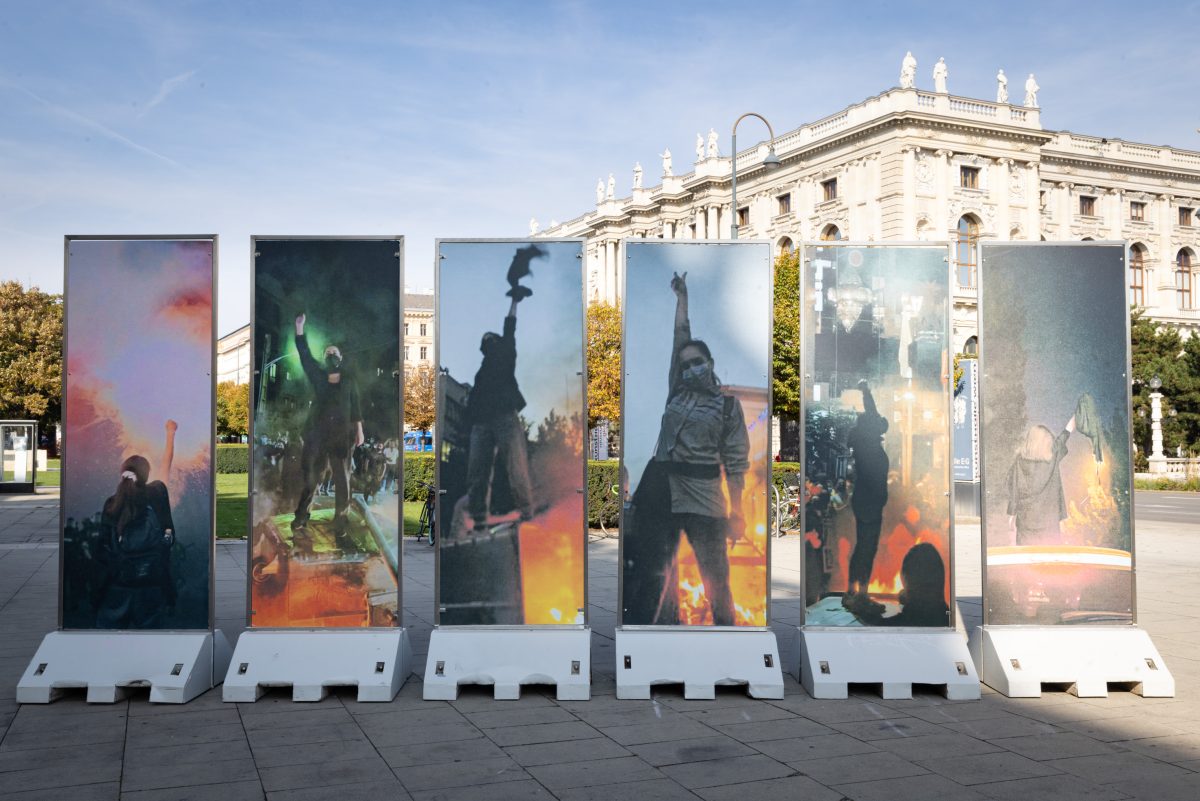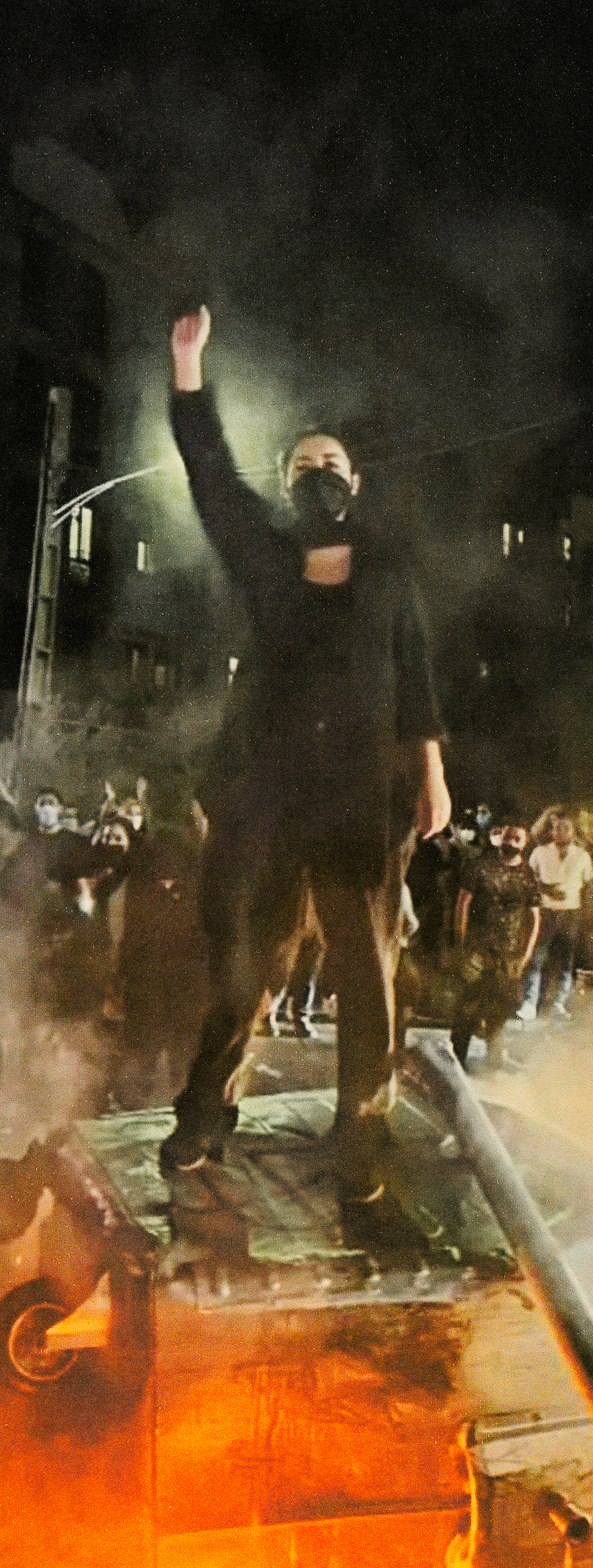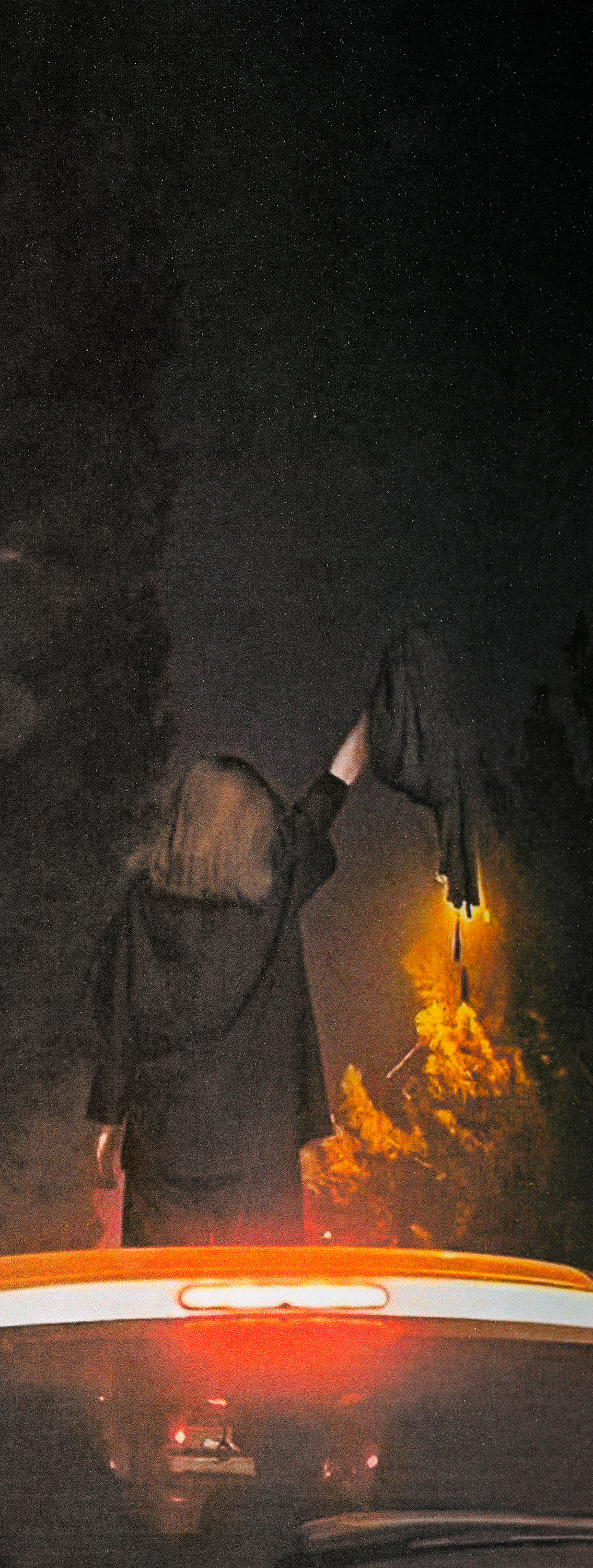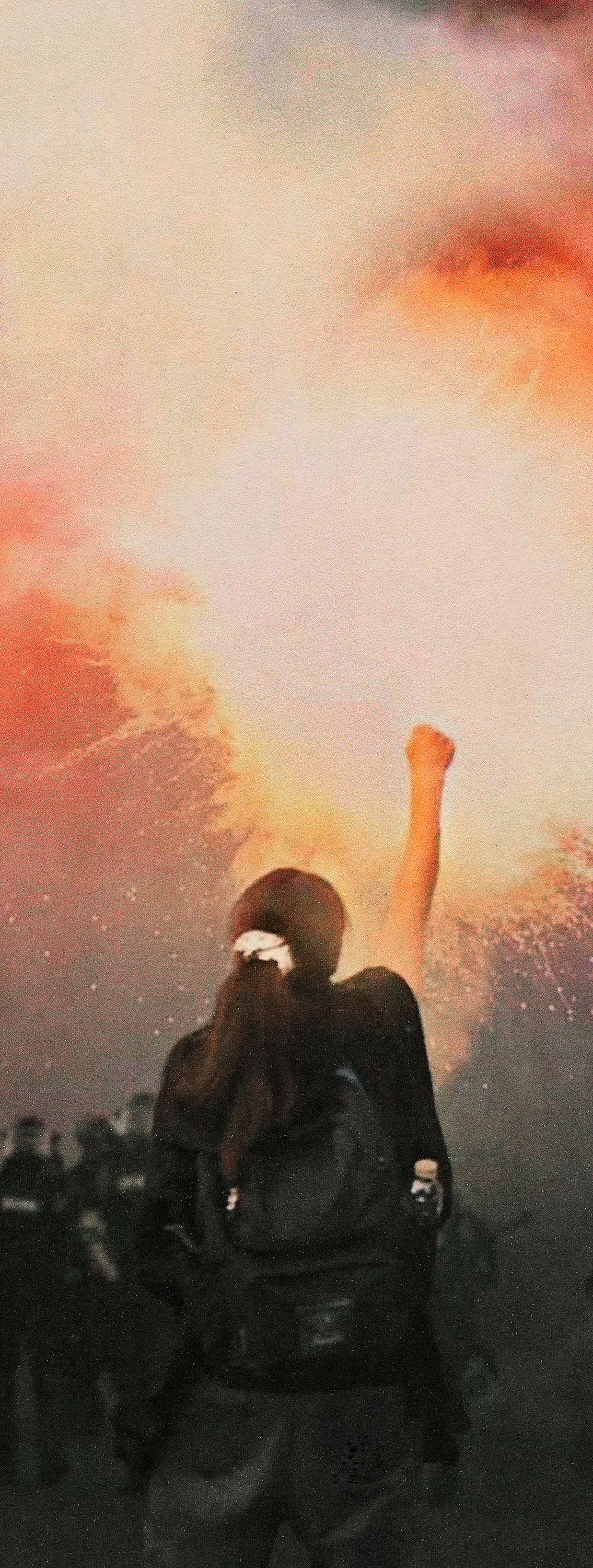From issue: #19 Image Flow
Hoda Afshar’s installation Women Life Freedom (2022) uses images of women taken at protests in her home country, Iran. Drawn from the internet, these images are placed on public display in her work, where they can be rephotographed and reshared, in a bid to draw attention to the protests as they fade from the news cycle. Photoworks curator Julia Bunnemann explains

‘The poor image is a copy in motion,’ wrote Hito Steyerl in her 2009 essay In
Defense of the Poor Image. ‘Its quality is bad,’ she continues, ‘its
resolution substandard. As it accelerates, it deteriorates. It is a ghost of an
image, a preview, a thumbnail, an errant idea, an itinerant image distributed
for free, squeezed through slow digital connections, compressed, reproduced,
ripped, remixed, as well as copied and pasted into other channels of
distribution.’
Fourteen years later, the emergence of the poor image looks unstoppable in
our post-digital world: more and more images are circulating the web and social
media channels, and communication via images has become part of our everyday
life. In her work Women Life Freedom (2022), Melbourne-based Iranian
artist Hoda Afshar makes use of poor imagery to shed light on the ongoing
protests in Iran. Commissioned by the MuseumsQuartier Wien in late 2022, Afshar
picked six images from social media and had them installed on larger-than-life
slabs in the museum’s forecourt. Despite the poor quality of pixelated images,
their symbolic power is immense.
It was the brutal torture and murder of a 22-year-old woman, Mahsa Amini, by
Iranian morality police in September 2022, that sparked the latest wave of
protests. Enacted by women for women, the demonstrations spread across class,
religions and other identities worldwide. At the core of this movement is the
notion of care for – and by – the oppressed. For months, the Iranian
revolutionary regime has violently suppressed the demonstrations and has tried
to stop the spread of imagery of these events via social media.
Nevertheless, ‘images of Iranians’ heroic struggle against the authorities
have streamed out through social media and other channels,’ explains Verena
Kaspar-Eisert, who curated Afshar’s installation at MuseumsQuartier Wien.
Afshar adds: ‘Since the beginning of this movement, Iranians inside and outside
the country have been determined not to stop sharing such images, for they are
our only weapon, and they embody our message: we stand together, against
violence, and for women, life and freedom.’

Western perceptions of Iran and women’s rights play a vital role in Afshar’s work. For Women Life Freedom, she was fascinated by the power of photography and how photography operates in the revolutionary context. Afshar was particularly interested in how the images became different from those of past revolutions, and the performative character of the visual language of the image-makers on the streets. ‘It’s for the camera, for the world to see,’ claims Afshar. ‘It’s not ‘about the authorship of the image, but rather the purpose of the image and what it’s capable of doing.’
In their essay When Twitter got #woke, Farida Vis and colleagues argue that the aesthetics of protest relate to how ‘participants in social movements make their causes visible through acts of protests that are also efforts to gain forms of mediated visibility’. In Women Life Freedom, the women are anonymous yet depicted as relatable, solid and powerful, raising their fists in defiance. Raising a fist involves flexing all the muscles in your hand, and in doing so you gain natural strength; the symbol of the raised fist also represents solidarity with oppressed people.
Afshar picked images from the web that drew on these symbols of power, images created to be shared with the wider world. The creation of these photos implied an understanding and knowledge of the image of protest. In a recent conversation hosted by the University of Otago, Afshar explained that the images are educational to viewers. It is not about Islamophobia but about autonomy – we are witnessing a new generation of Iranians who are unafraid to claim their identity, and refuse to live a double life between the domestic and public world.

Women Life Freedom has been on display in front of MuseumsQuartier Wien since October. ‘With the additional presentation in Brazil during the Solar Foto Festival in 2022 and at RAW Photo Triennale in Worpswede, Germany in 2023, the idea of spreading the images of Iranians protesting for their human rights will be continued,’ says Kaspar-Eisert. By rephotographing the installation and sharing the works on the web and on social media, viewers can participate indirectly in the protests. As in Steyerl’s poor image theory, the performative is inherent in these images because they constantly transform as they move through the network.
‘Unfortunately, making images and taking photos in Iran is somehow unsafe these days,’ says an Iranian photographer who will remain anonymous. As a photography community, we can reshare these images and draw attention to protests slowly disappearing from our news.
Julia Bunnemann is one of the curators of the RAW Photo Triennale in Worpswerde, Germany in 2023, which includes Women Life Freedom.



